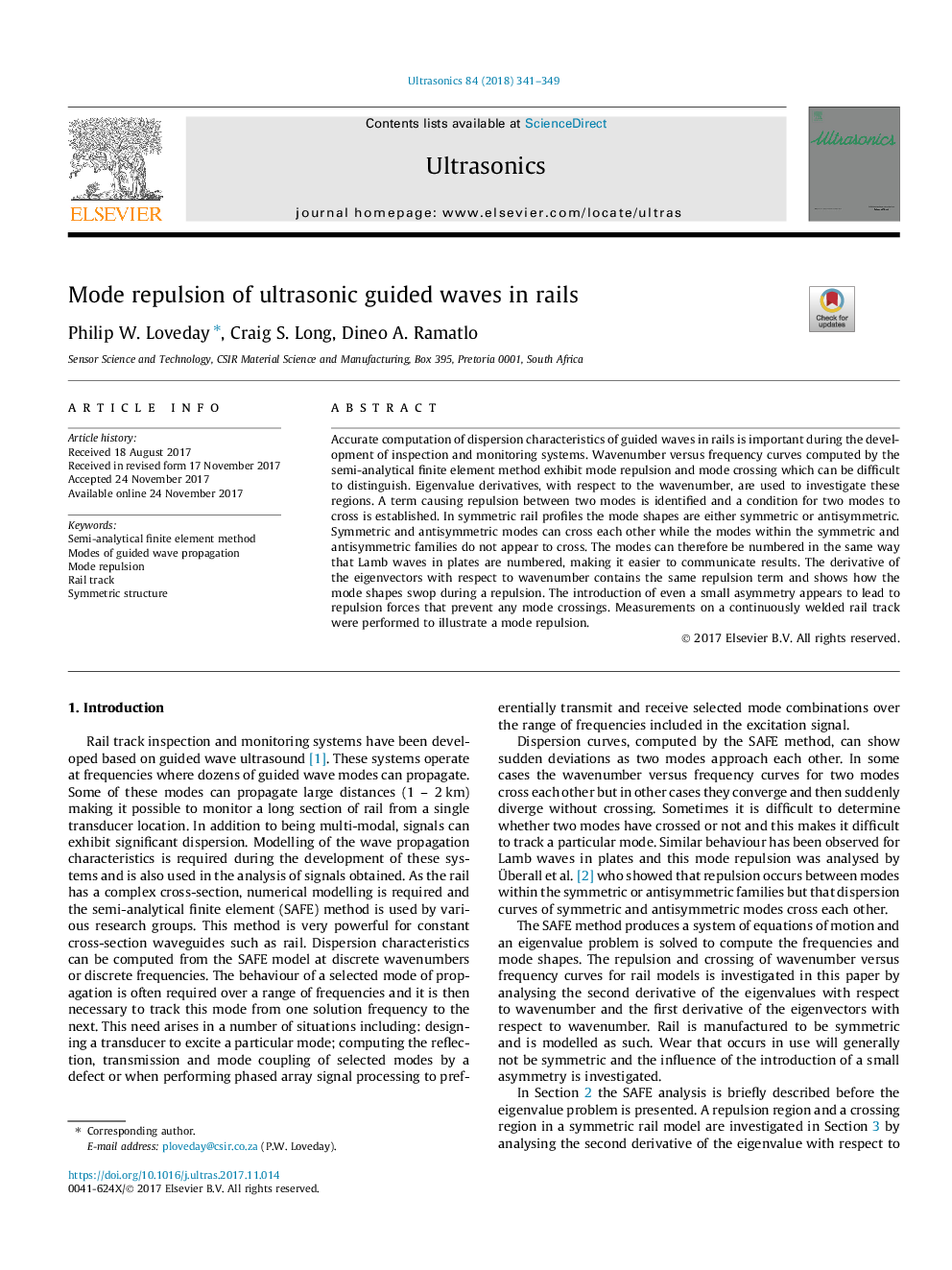| Article ID | Journal | Published Year | Pages | File Type |
|---|---|---|---|---|
| 8130008 | Ultrasonics | 2018 | 9 Pages |
Abstract
Accurate computation of dispersion characteristics of guided waves in rails is important during the development of inspection and monitoring systems. Wavenumber versus frequency curves computed by the semi-analytical finite element method exhibit mode repulsion and mode crossing which can be difficult to distinguish. Eigenvalue derivatives, with respect to the wavenumber, are used to investigate these regions. A term causing repulsion between two modes is identified and a condition for two modes to cross is established. In symmetric rail profiles the mode shapes are either symmetric or antisymmetric. Symmetric and antisymmetric modes can cross each other while the modes within the symmetric and antisymmetric families do not appear to cross. The modes can therefore be numbered in the same way that Lamb waves in plates are numbered, making it easier to communicate results. The derivative of the eigenvectors with respect to wavenumber contains the same repulsion term and shows how the mode shapes swop during a repulsion. The introduction of even a small asymmetry appears to lead to repulsion forces that prevent any mode crossings. Measurements on a continuously welded rail track were performed to illustrate a mode repulsion.
Related Topics
Physical Sciences and Engineering
Physics and Astronomy
Acoustics and Ultrasonics
Authors
Philip W. Loveday, Craig S. Long, Dineo A. Ramatlo,
